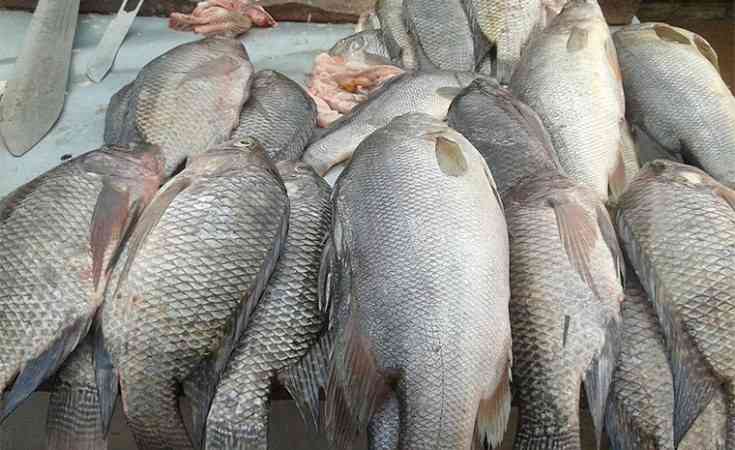
Zimbabwe’s ballooning informal sector has, in recent years, spawned the over-exploitation of the country’s natural resources, with the fisheries taking some of the most felt battering.
Amidst challenges brought by economic hardships, fisheries—for long imagined to be an infinite resource by hawkers and fishermen—are providing women with livelihoods against odds brought by climate change and competition from male fishmongers who go into the water.
Selling fish has for years been a source of income for women, but with current unemployment levels, more and more women are trying their hand at anything that will provide income.
According to the International Labour Organisation, out of more than five million informal traders in Zimbabwe, 65% are women, throwing more women into sectors such as fisheries that offer hope for steady incomes.
However, this comes with its own downside.
Demand for aquaculture produce has not slowed amid dwindling fish stocks in the country’s dams, according to the ministry of Lands, Agriculture, Fisheries, Water, Climate, and Rural Development.
Officials say because consumers have no idea about underwater resource sustainability and management, the more nets are cast into the country’s waters, the less efforts are done to conserve the country’s fisheries.
Long touted as a cheap source of nutrition, with the price of fish bought directly from dams cheaper than that sold in supermarkets and butcheries, this has resulted in unintended consequences.
- Mavhunga puts DeMbare into Chibuku quarterfinals
- Bulls to charge into Zimbabwe gold stocks
- Ndiraya concerned as goals dry up
- Letters: How solar power is transforming African farms
Keep Reading
Janet Dube is a frustrated single breadwinner in Bulawayo.
She makes a living visiting dams surrounding the city of Bulawayo and used to travel as far as the Zambezi to purchase fish stock but now says she has watched as a growing number of people, especially women try their luck buying and selling fish.
And with huge numbers entering the fish trade, it has meant diminishing returns as fish in the country’s waterways are not being repopulated fast enough.
“I don’t get as many fish as I used to from my suppliers even from dams around the city where you do not have to travel to faraway places such as Binga to buy fish for resale in Bulawayo,” Dube said.
Sitting on the pavement of Bulawayo’s central business district, in the country’s second city, Dube hawks fresh breamss and laments that although her stock is low, she still must worry about the fish going bad because of electricity power cuts.
Zimbabwe is in the midst of a long-running energy deficit that has not spared anyone, with the fisheries sector feeling the strain.
“I only come to sell fish in the central business district late afternoon to avoid losses as fish goes bad pretty fast,” Dube told IPS.
However, for other fishmongers, selling dried bream and kapenta has become the answer to these challenges.
At another bustling city pavement, Gracious Maruziva sells dried kapenta sourced in the Zambezi Valley.
“I don’t go there myself but buy from some people who travel to Binga regularly, but they don’t supply as regularly as they used to,” Maruziva said.
The reason: Her suppliers are struggling to bring in the once-abundant delicacy.
“It’s increasingly becoming tough selling fish as they say they are also not getting enough from their suppliers in the Zambezi,” she added.
Local researchers and agencies such as the Food and Agriculture Organisation (FAO) have raised concerns about the lack of sustainability efforts in the country’s fisheries sector, that in recent years has experienced its own gold rush of sorts.
For years women in Bulawayo have travelled long distances to buy fish in bulk, creating long value chains along the way, but it is the current challenges that include low fish stocks in the dams and power outages that interrupt refrigeration that is exposing the risks that come with the fish business.
And with those challenges has been little success in sustainability and conservation of natural resources, experts say.
“We have seen it in the resource-rich communities through our trade justice work communities carry what is known as the ‘resource curse’,” said John Maketo, programmes manager at the Zimbabwe Coalition on Debt and Development.
“Instead of adequately benefiting from the availability of a natural resource around them, communities become overburdened with the negative consequences of having it,” Maketo said at a time artisanal fishermen and miners are blamed for anything stripping dams of fish and illegally exploiting gold claims across the country.
However, there are concerns that in the absence of robust conservation efforts, the country’s fisheries could adversely affect rural communities relying on natural resources.
The Zimbabwe Parks and Wildlife Management Authority (ZimParks) is on record lamenting the unregulated new entrants into the fisheries sector, a development that has further threatened already low fish stocks in the country’s dams.
According to FAO’s FISH4ACP, an initiative that seeks the economic and sustainability of fisheries in Africa, the Caribbean and the Pacific, Zimbabwe has over 12,000 dams, noting that despite this abundance, the sector continues to struggle.
To address this, FAO is “supporting an economically, socially, and environmentally sustainable fish farming sector” amid weak regulatory mechanisms and sound implementation of existing fishing quotas.
For women who find themselves hawking fish in the streets of Bulawayo, the consequence of that struggle is being felt in their daily takings.
“Fish is profitable, provided I get constant supplies. For now, I’m making do with what I can get,” said Dube. – IPS
*This story was supported by the Pulitzer Centre.







